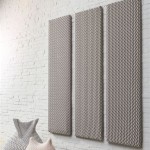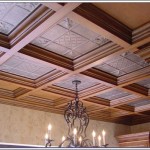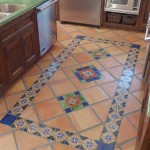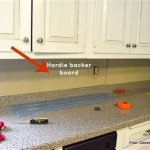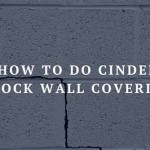How To Fix Tiles That Fell Off Shower Wall
The detachment of tiles from a shower wall is a common household issue that can lead to more significant problems if left unaddressed. Water intrusion behind the tiles can damage the wall structure, promoting mold growth and potentially requiring extensive and costly repairs. Understanding the reasons behind tile failure and knowing how to properly reinstall them are crucial for maintaining the integrity and longevity of your shower.
Numerous factors can contribute to tiles falling off a shower wall. The most prevalent cause is moisture penetration through grout lines, which weakens the adhesive bond between the tile and the substrate. Inadequate surface preparation during the initial installation, such as applying tiles to a dirty or uneven wall, can also compromise adhesion. Temperature fluctuations within the shower environment can cause the tiles and the underlying materials to expand and contract at different rates, placing stress on the adhesive. Furthermore, using an inappropriate type of adhesive or applying it incorrectly can result in bond failure over time. Selecting the appropriate materials and adhering to proper installation techniques are essential for preventing future tile detachment.
Addressing the problem promptly is key to preventing further damage. The following steps outline the procedure for replacing detached shower tiles and restoring the shower wall to its original condition. The process involves careful preparation, proper material selection, and precise execution to ensure a durable and watertight repair.
Preparing the Area
The initial step involves meticulously preparing the area surrounding the detached tiles. This entails removing any loose or crumbling grout and adhesive residue from both the surrounding tiles and the shower wall. A grout removal tool or a small chisel can be used to carefully scrape away the old grout. Exercise caution during this process to avoid damaging the adjacent tiles. A utility knife can be helpful for scoring along the grout lines before using the grout removal tool.
After removing the grout, thoroughly clean the exposed area of the shower wall. A putty knife or scraper can be used to remove any remaining adhesive residue. For stubborn adhesive, a chemical adhesive remover specifically designed for tile applications may be necessary. Follow the manufacturer's instructions carefully when using chemical removers, ensuring proper ventilation and wearing appropriate protective gear, such as gloves and eye protection. Once the adhesive is removed, wipe down the area with a damp sponge to remove any remaining debris. Allow the wall to dry completely before proceeding to the next step.
Inspect the exposed shower wall for any signs of damage, such as cracks, rot, or mold growth. If any damage is present, it must be addressed before reinstalling the tiles. Small cracks can be filled with a waterproof patching compound. Rotting wood should be replaced. Mold growth should be treated with a mold-killing solution. Ensuring a sound and clean substrate is crucial for achieving a strong and lasting bond between the new tiles and the shower wall.
Selecting the Right Materials
Choosing the correct materials is essential for a successful tile repair. The type of adhesive used will depend on the type of tile being installed (e.g., ceramic, porcelain, glass) and the substrate material (e.g., cement board, drywall). Thin-set mortar is a commonly used adhesive for tile installations, providing a strong and durable bond. Choose a thin-set mortar specifically formulated for wet environments, such as showers. These mortars typically contain additives that enhance their water resistance and flexibility.
When selecting thin-set mortar, consider its open time and setting time. Open time refers to the amount of time you have to work with the mortar before it begins to dry and lose its adhesive properties. Setting time refers to the amount of time it takes for the mortar to cure completely. Choose a mortar with an open time that suits your skill level and the complexity of the installation. A longer open time is generally preferable for beginners, as it allows more time for adjustments. The color of the thin-set mortar should also be considered, especially if using translucent or light-colored tiles. A white thin-set mortar is often preferred in these cases to prevent the mortar from affecting the tile's appearance.
Select grout that matches the existing grout in terms of color and type. Grout is available in sanded and unsanded varieties. Sanded grout is typically used for grout lines that are 1/8 inch or wider, while unsanded grout is used for narrower grout lines. Choose a grout that is specifically formulated for use in wet environments, such as showers. These grouts typically contain additives that enhance their water resistance and stain resistance. Epoxy grouts are a popular choice for showers due to their superior water resistance and durability. However, epoxy grouts can be more difficult to work with than cement-based grouts.
Tile Installation and Grouting
Before applying the adhesive, dry-fit the tiles to ensure they fit properly and align with the surrounding tiles. Use tile spacers to maintain consistent grout lines. Adjust the tiles as needed to achieve a uniform and aesthetically pleasing appearance. Once you are satisfied with the fit, remove the tiles and prepare to apply the thin-set mortar.
Mix the thin-set mortar according to the manufacturer's instructions. Add water gradually to the dry mortar mix, stirring constantly until you achieve a smooth, creamy consistency. Avoid adding too much water, as this can weaken the mortar. Let the mortar slake for the amount of time prescribed by the manufacturer. This allows the materials to combine completely, leading to a stronger bond. Apply the thin-set mortar to the back of the tiles using a notched trowel. The size of the notch will depend on the size of the tiles. Use the notched trowel to create ridges in the mortar, which will help to distribute the mortar evenly and provide a better bond. Apply the mortar to the shower wall as well, creating a thin, even layer.
Press the tiles firmly into place, using a slight twisting motion to ensure good contact with the mortar. Use tile spacers to maintain consistent grout lines. Remove any excess mortar that squeezes out between the tiles. Use a damp sponge to clean the tile surfaces and remove any mortar residue. Allow the mortar to cure completely according to the manufacturer's instructions, typically 24-48 hours.
Once the mortar has cured, remove the tile spacers and prepare to grout the tiles. Mix the grout according to the manufacturer's instructions. Apply the grout to the grout lines using a grout float. Work the grout into the grout lines, filling them completely. Remove any excess grout from the tile surfaces using the grout float. Use a damp sponge to clean the tile surfaces and smooth the grout lines. Rinse the sponge frequently and avoid using too much water, as this can weaken the grout. Allow the grout to dry for the amount of time prescribed by the manufacturer.
After the grout has dried, buff the tile surfaces with a clean, dry cloth to remove any grout haze. Apply a grout sealer to the grout lines to protect them from water penetration and staining. Apply the sealer according to the manufacturer's instructions. Reapply the sealer periodically, as needed, to maintain its effectiveness. Proper maintenance, including regular cleaning and sealing, will help to prolong the life of the tiles and prevent future tile detachment.
By carefully following these steps, you can successfully repair detached shower tiles and restore the integrity of your shower wall. Remember to prioritize safety, use appropriate materials, and take your time to ensure a professional and lasting result.

How To Fix Shower Tiles Falling Off Wall Diy

Repair Fallen Tile Reinstall Shower With Simple Fix Re Install Bath No Grout

How To Repair Broken Tile Part One

How To Fix Loose Shower Tiles Renovator Secrets

How To Remove Bathtub Shower Wall Tiles

Tips On How To Remove Old Shower Tile Ugly Duckling House

How To Replace A Broken Tile Soap Dish In Shower
Advice Please Tiles Falling Off In The Shower Diynot Forums

Tips On How To Remove Old Shower Tile Ugly Duckling House

How To Replace Shower Wall Tiles Art Tile Renovation
Related Posts

